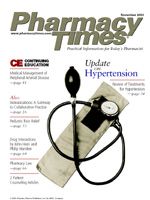Instilling a Measure of Safety into Telephone and Verbal Orders
Problem
Telephone orders and verbal orders (those given directly by 1 person in the presence of another person) may offer more room for error than orders that are handwritten or sent electronically. The interpretation of what someone else says is inherently problematic because of different accents, dialects, and pronunciations. Background noise, interruptions, and unfamiliar terminology often compound the problem. Once received, these orders must be transcribed as written orders?which adds complexity and risk to the ordering process. Unfortunately, the only real record of the verbal order is in the memories of those involved.
If a physician?s staff member takes a verbal order from the physician and subsequently telephones it in to the pharmacy, there is even more room for error. The pharmacist must rely on the doctor?s staff member (who may not have a health care background), not only to accurately transcribe the verbal order, but also to relay it correctly by phone. This situation may be even more problematic if the order is left on a pharmacy?s voice-mail system, because the pharmacist is unable to ask for clarification or read back the order unless he or she calls the prescriber?s office.
Sound-alike drug names also can lead to misunderstanding. There are literally thousands of name pairs that are easily confused. Here is just 1 example: During an office visit, a man asked his physician for something to relieve his allergy symptoms. The physician telephoned the patient?s pharmacy and ordered ?60 Allegra? (fexofenadine). After picking up the prescription, the patient called his physician to find out why he had been prescribed a drug that cost $450. The shocked physician called the pharmacy. The pharmacist had misheard the telephone order as ?60 Viagra? (sildenafil).
Staff members in physician offices and pharmacies have tried to prevent this type of error by posting wall charts of sound-alike drug names. (An example is available online at www.usp.org/pdf/patientSafety/qr762001-03-01.pdf.) Although these charts are excellent educational tools, they usually do not help when an order is being given, because people tend to assume that what they hear is correct.
Drug names are not the only information prone to misinterpretation. Numbers, especially those in the ?teens,? also are easily misheard (such as ?sixteen? heard as ?sixty?).
Safe Practice Recommendations
Facsimiles, electronic mail, and computerized prescribing are reducing the number of telephone orders in nonemergent situations. It is very unlikely, however, that these orders will ever be totally eliminated. The following guidelines should help make receiving verbal and telephone orders safer at the practice site. Although not all of these suggestions may be feasible at a given pharmacy site, they can be helpful as pharmacists evaluate their current practices.
- Pharmacists should raise awareness of problematic name pairs at their practice site so that staff members are prepared to question an order as it is received.
- The recipient should always read a telephone order back to the prescriber to avoid misinterpretation. This step is absolutely essential and should become a habit, even if the recipient is confident that he or she has heard the order correctly. (This measure is a requirement for those working in long-term care or home care operations accredited by the Joint Commission on Accreditation of Healthcare Organizations.) When the prescriber is not calling the pharmacy himself or herself, reading back the order should happen twice?first, for verbal orders, between the physician and his or her office personnel, and later, for telephone orders, between the physician?s staff member and the pharmacy staff member. As an extra check, either the prescriber or the recipient should spell out unfamiliar drug names, using ?T as in Tom,? ?C as in Charlie,? and so forth. The prescriber or the recipient also should pronounce each numerical digit separately?for example, ?one six? instead of ?sixteen,? to avoid confusion with ?sixty.?
- The pharmacy staff person should obtain the purpose of the prescribed medication to ensure that the order makes sense in the context of the patient?s condition. Most reported sound-alike name pairs have different indications.
- The pharmacy staff member should have a second staff person listen to the order. This should be a requirement if the recipient is inexperienced.
- The physician?s office staff member should record the order directly onto a blank prescription pad or order sheet in the patient?s chart whenever possible. Transcription from a scrap of paper to another form introduces an additional opportunity for error. The recipient in the pharmacy also should use a blank Rx pad and note the date, time, and name of the caller when the call is received.
- The recipient should obtain the phone number of the prescriber, and the time that he or she will be available, in case follow-up is needed, especially if the prescriber used a cell phone.
- Whenever possible, a pharmacist should take all telephone orders. If the state allows certified pharmacy technicians to accept telephone orders, the number of personnel who may accept them should be limited. This practice will allow the designated technicians to become familiar with prescribing guidelines. As an added benefit, these technicians will come to know the people calling in the prescriptions? which could reduce the potential for fraudulent telephone orders.

